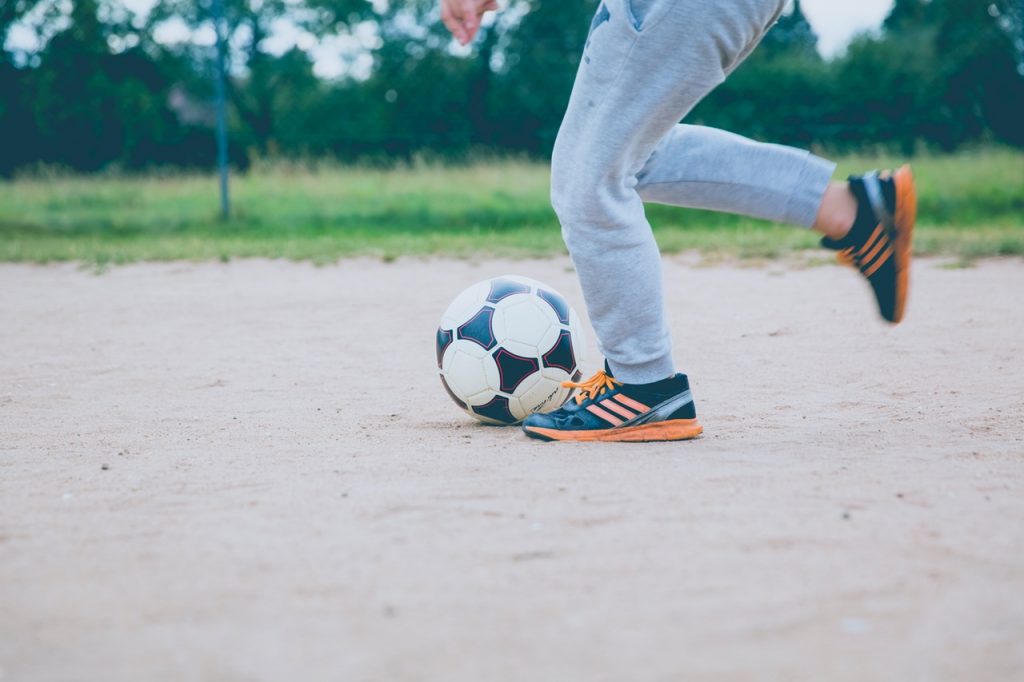To a mere observer, a soccer game is 22 people running around in a field, trying to kick the ball into the opposing team’s net for 90 minutes, and that’s it. It might seem simple enough, but the brutal reality of the sport is much different. Ask any avid soccer player, professional or amateur, and they will tell you that the amount and variety of training needed to reach a certain level of performance is staggering.
After all, that is why many aspiring athletes never make the cut, as soccer is a game of balance, stamina, explosiveness and power, and unwavering determination. These skills are developed both in the gym and on the field, through hard work and dedication. Here are the top balance drills you need to try if you want to bring your game to a completely new level.

Single leg squat variations
Lower body strength, explosiveness, endurance, and balance are crucial elements that can make or break your soccer career, and if you want to achieve these goals, you need to challenge your legs, glutes, and calves in a completely different way. Enter single leg squat variations.
Start with the basic exercise, the pistol squat with a twist. Hold the ball between the front of your shin and the arch of your foot. Don’t drop the ball. Complete 10 reps per leg. Do the same exercise but put the ball on the back of your neck. If you’re up for a real challenge, have a partner throw passes at you while you’re performing the squats, and use you free leg to kick the ball back without losing balance.
Plyometric movements
Also known as jump training, plyometric exercises are designed to test your balance, develop your explosive power, and increase muscle mass by involving all motor units of the legs, glutes, hips, and calves. You will need an adjustable platform, or a set of heavy boxes in varying heights.
Start by doing single leg jumps, alternating the legs between sets of 10. Be sure to jump back down into a full squat. When you start to see progress, you can incorporate front kicks, side kicks, and volley kicks with your free leg. Do not let your free leg touch the surface of the platform before or after performing the kick.
Practicing balance on the go
Balance training can be done on the field, in the gym, or in everyday life. If you want to practice your balance outside your regular training schedule and up your performance in time for the next field practice, several tools can help you with your goals.
Begin by cycling. This is a great way to stay active on your off days, and challenge your entire body. If you are already proficient at bike-riding, you want to step up the challenge by grabbing a cool mini cruiser you can ride around town. Skateboards are amazing at putting your balance to the test, as they require you to engage your entire musculature to stay upright. Once you’ve mastered cruising, you can go for tricks and flips that will challenge your skills even further. Remember, it’s not all about training religiously in the gym day in and day out, balance drills can be fun too.
Resistance exercises
Finally, you have resistance exercises aimed at pushing your body to fight for balance against an opposing force. This can be your training partner pushing you back while you run the field, or it can be something more interesting and stimulating, like using resistance bands and balance balls.
Stand on one leg while the resistance band is tied around the opposite ankle. Shoot front kicks with your “free” leg, and then switch legs. After that, perform side kicks in the same manner, finishing the routine with resisted volley kicks. You can also do this on a Bosu ball, but remember not to let your free leg touch the ground during the exercise.
Balance training can be mundane and tedious, but if you sprinkle a little imagination into your routine, it can become fun, challenging, and rewarding. Be sure to try out these training methods the next time you want to work on your balance, and you will have no problem elevating your soccer game to a completely new level.






